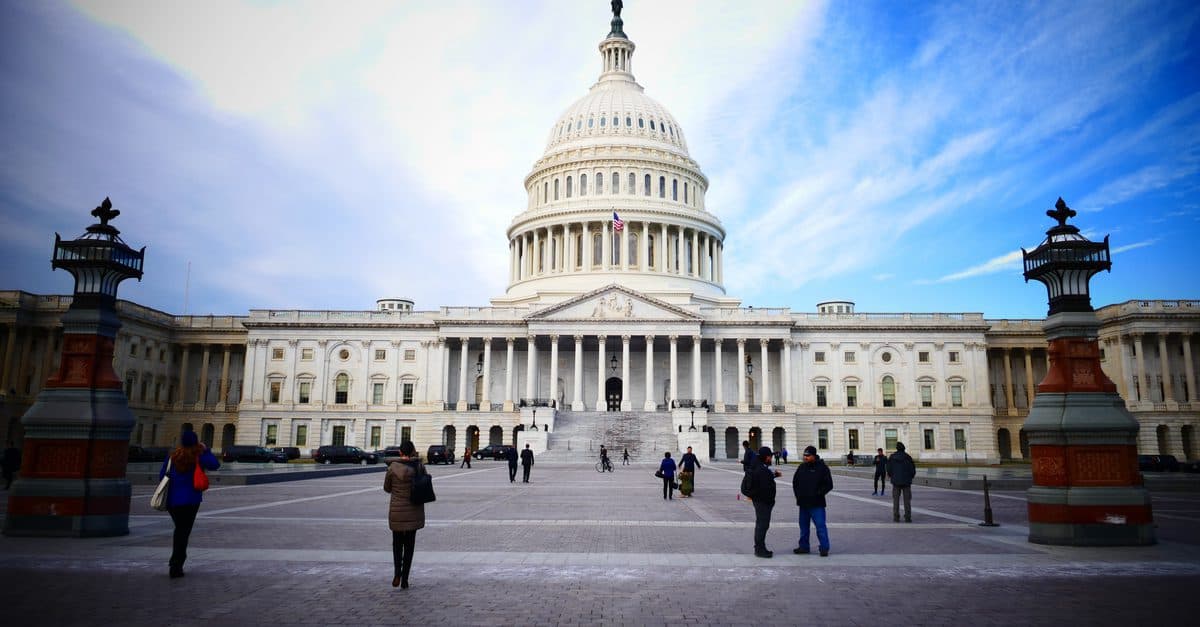Confusion Abounds as US Lawmakers Debate Digital Dollar
Environmental costs of bitcoin and proof-of-work took center stage at Senate hearing on June 9 — a hearing that was to be focused on something else entirely

Source: Shutterstock
- US Senate Committee hearing on CBDCs and digital dollars saw its focused shifted to bitcoin and blockchain as lawmakers brought up concerns over environment and cybercrime
- All four witnesses, pulled from industry and academia, called to testify were in favor of some form of CBDC
A US Central Bank Digital Currency (CBDC) has a plethora of benefits for financial inclusion and banking efficiency, witnesses testified at a US senate subcommittee hearing on Wednesday. However, lawmakers’ initial concerns were focused on decentralized, blockchain-based bitcoin, ransomware attacks and environmental impact, not its theoretical centralized government-issued digital ledger counterpart.
CBDCs, or in the American context a ‘digital dollar’, are tokens issued by a central bank on a digital ledger — a centralized computer network that’s similar, but not the same, as a private, permissioned blockchain.
Cryptocurrencies are decentralized currencies secured by cryptography and made inherently scarce through mining.
Although the technology behind the two are similar, they are not the same. A CBDC will always be under control of a central bank whereas cryptocurrency has no issuing authority.
Lambasting cryptocurrencies
Despite the CBDC focus of the hearing, Subcommittee Chairwoman Senator Elizabeth Warren (D-MA) began her opening statement by lambasting cryptocurrencies for their carbon footprint and enablement of cybercrime — common themes surrounding bitcoin recently.
Warren also expressed concern about recent cyberattacks that come with multi-million dollar cryptocurrency ransoms. “Congress and federal regulators can’t continue to hide out, hoping that crypto will go away. It won’t. It’s time to confront these issues head on,” she said.
Christopher Giancarlo, former chair of the Commodity Futures Trading Commission and co-founder of the Digital Dollar Foundation, pointed out in testimony that a digital dollar would be pseudonymous but would allow for the ability to track transactions.
“With the proper Fourth Amendment jurisprudence and thoughtful design choices relating to anonymity and individual privacy, the digital dollar could well enjoy privacy protections superior to many competing instruments, whether provided by commercial interests or other sovereign nations,” he continued.
When US Special Presidential Envoy for Climate John Kerry, asked if transactions would be encrypted using “blockchain technology”, Neha Narula, director of the Digital Currency Initiative at the Massachusetts Institute of Technology (MIT), responded that encryption — which has existed well before blockchain was invented — would play a key role in any sort of US CBDC.
“It is true that cryptocurrencies seem to be the vector of choice for issues like ransomware,” Narula continued. “However, it’s also the case that because of its open auditable nature, it’s a tool for law enforcement to track those funds”
Giancarlo also pointed out that a digital dollar would not need to be “mined” and rather “created cryptographically by the Fed and distributed electronically.”
“Such distribution would make a digital dollar environmentally superior even to our current use of fiat money that has an overlooked environmental cost in the operation of electronic ATMs and the physical mining, minting and distribution of notes and coins,” he said.
CBDCs as an Agent of Inclusion
MIT’s Narula and Lev Menand, a professor at Columbia Law School, focused a notable part of their testimony on how CBDCs could bring more people into the financial ecosystem.
“Users would have an already existing mental model for cash for how it works and how to use it,” Narula said, arguing that it wouldn’t be alien to many users, particularly the elderly. “Central bank digital currency might have the potential to increase financial inclusion, reduce transaction costs, and become a platform for innovation in payments, if designed and implemented in the right way.”
Columbia’s Menard added CBDCs “can bring millions of people into the mainstream financial system. The primary reason six percent of households lack bank accounts is that it is unprofitable for banks to operate deposit accounts for people with low balances.”
But When Will We See a CBDC?
Warren said that this is the first of many hearings on the topic, and a report on the benefits of a digital dollar is expected in July.
But there wasn’t really a clear timeline of when the next steps making a CBDC a reality would come to fruition. During the hearing, witnesses warned that the looming threat of China’s digital currency should accelerate the process and create a sense of urgency amongst lawmakers.
“Whether we eventually want a digital dollar or not — it’s almost a second order of magnitude issue,” Giancarlo said. “The first issue is that we lead in technological development and we lead in the standard setting.”
He added that the Fed already has the authority to begin on the research and development of a CBDC but Federal Reserve chairman Jerome Powell would need more authority for its issuance.
Powell’s authority comes from lawmakers, who certainly haven’t ruled out a digital dollar, but as of now don’t seem to be convinced.
“We don’t need a state-sponsored bank interfering with this successful free enterprise system,” said committee member Senator Pat Toomey (R-PA)
Even Warren, despite her skepticism and criticism of cryptocurrency, isn’t giving the concept a hard no.
“Legitimate digital public money could help drive out bogus digital private money,” Warren said during the hearing. “It could help improve financial inclusion, efficiency, and the safety of our financial system if that digital public money is well-designed and efficiently executed, which are two very big ‘ifs.’”






